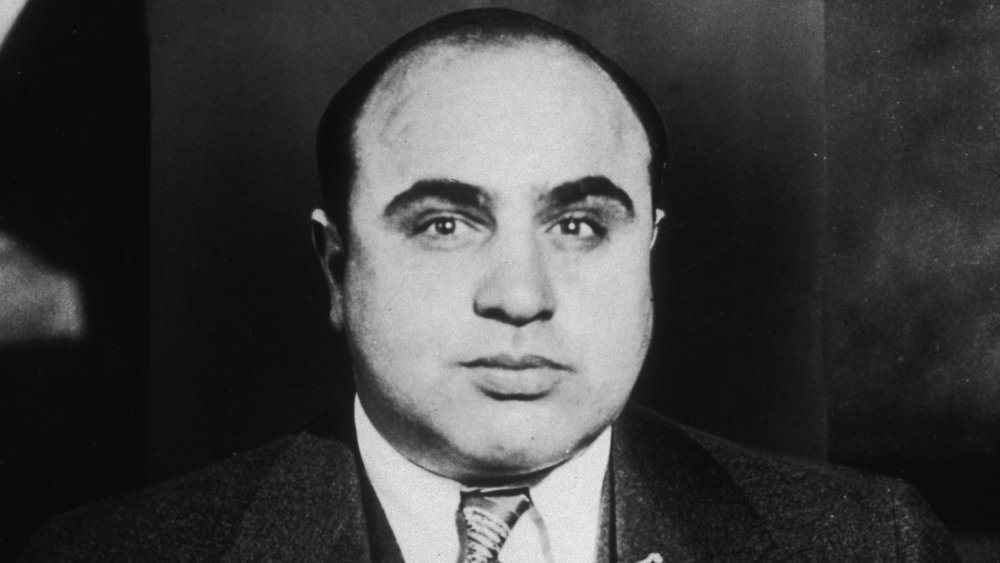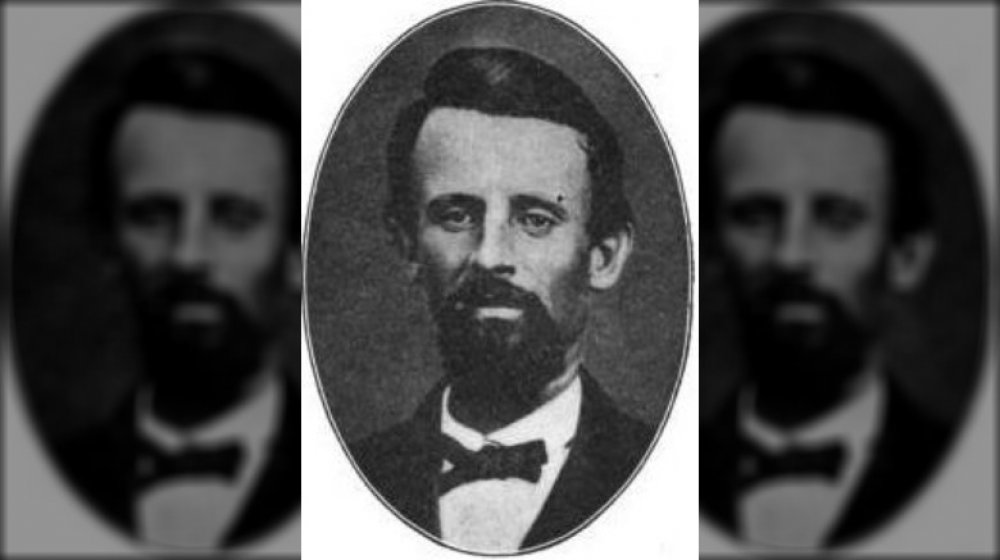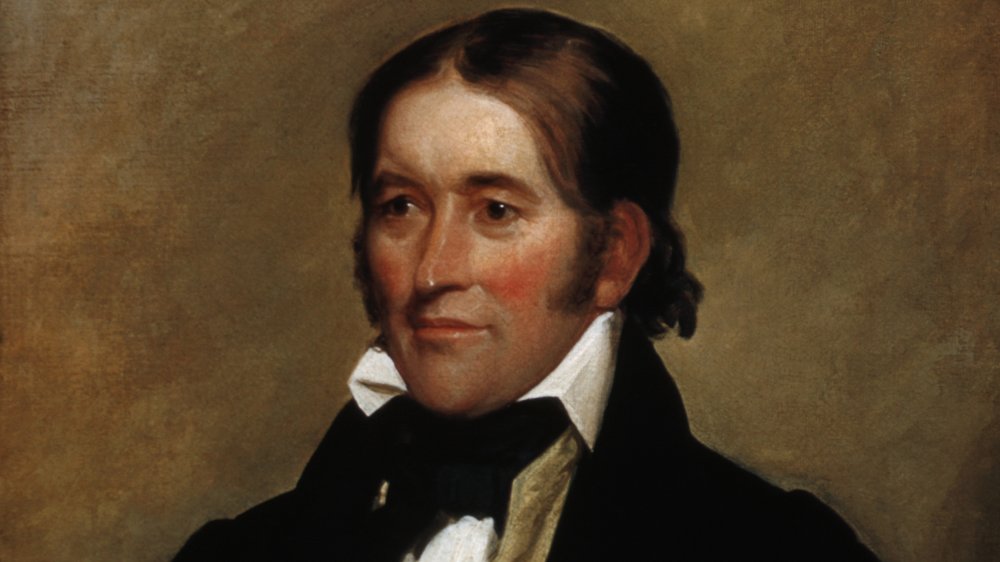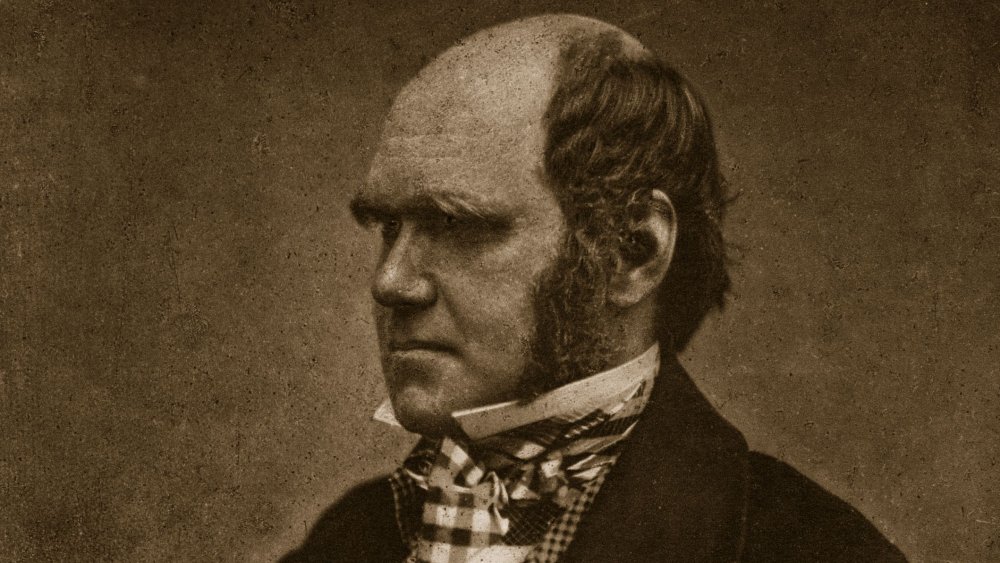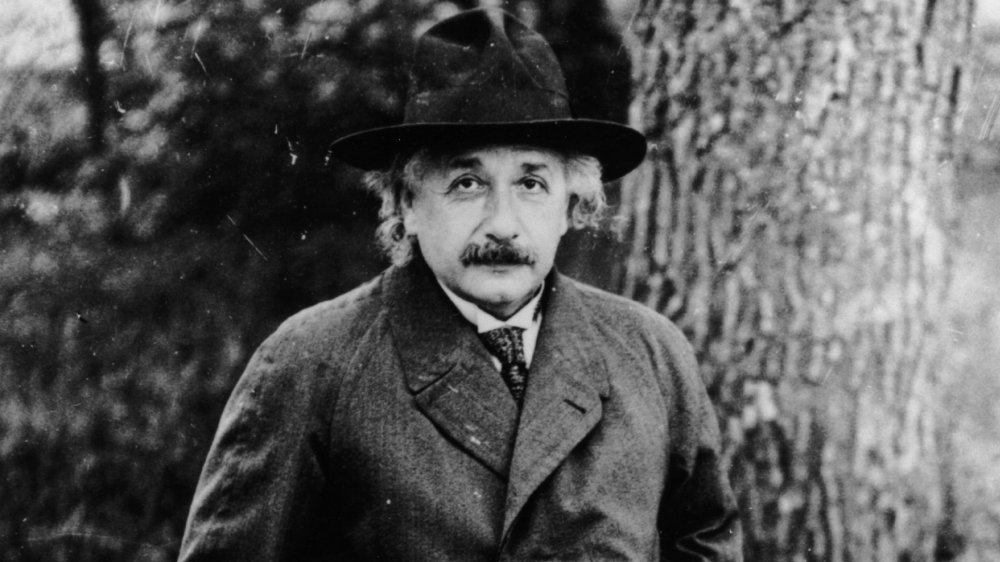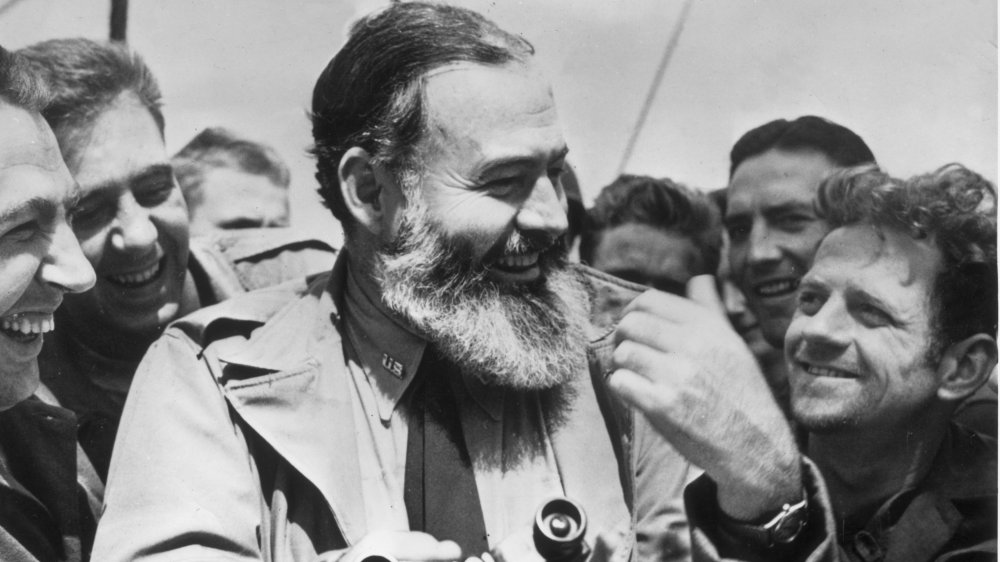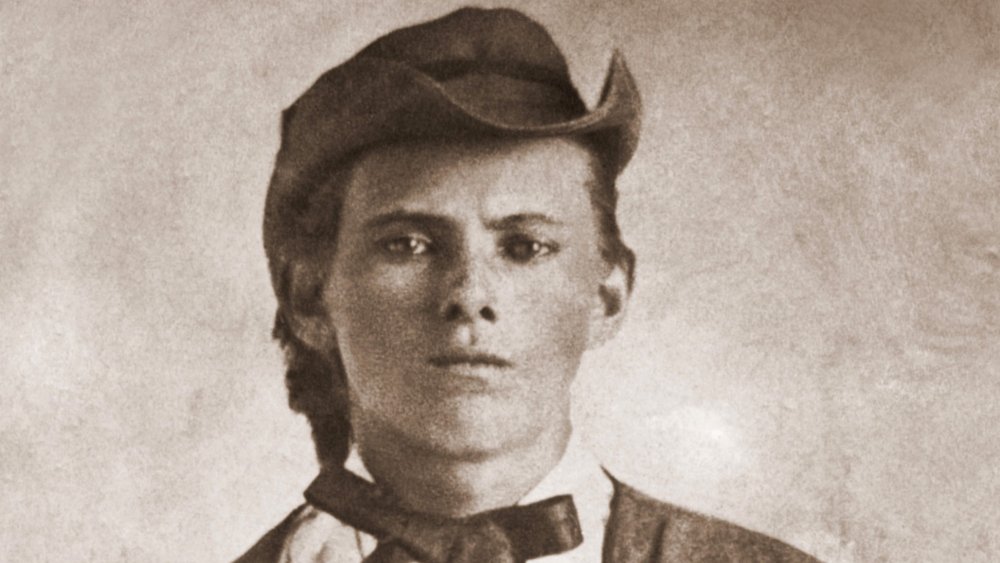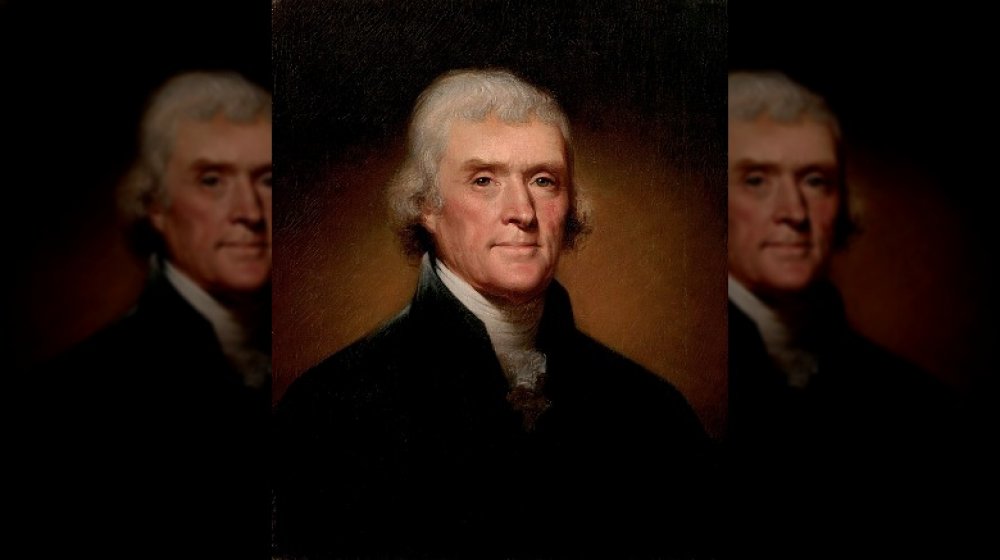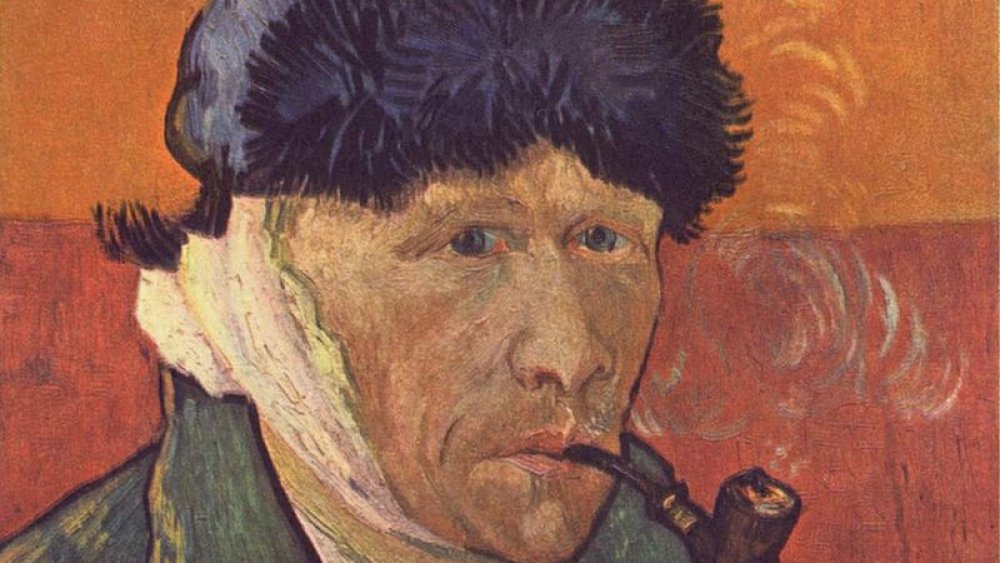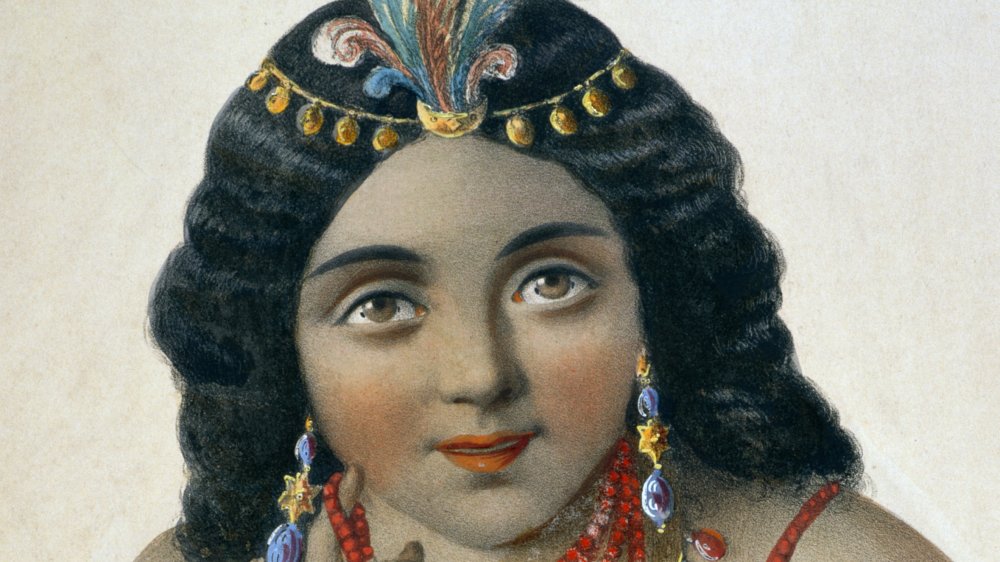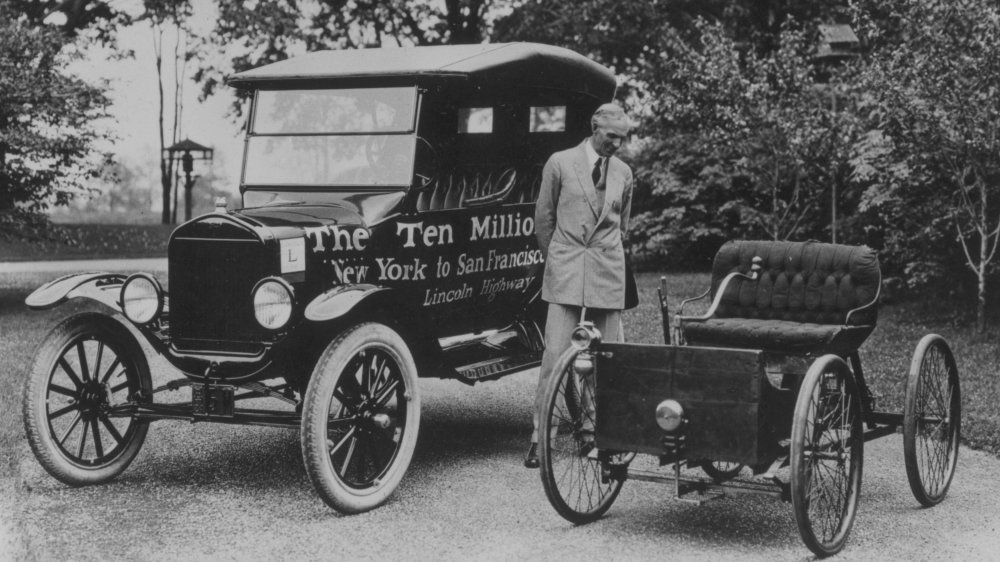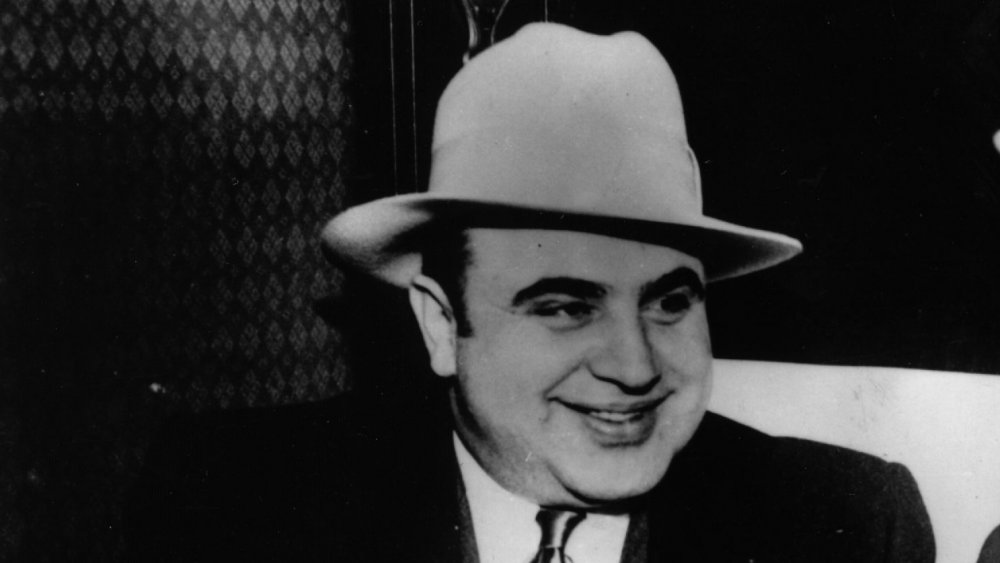Who Are The Descendants Of These Famous Historical Figures?
Ancestors — everybody's got 'em. And if you wanted to spend a bit of time examining your family tree, you might actually find a surprise hidden in all those branches: a famous historical relative.
After all, famous people are exactly that — people. And for the most part, people have kids and those kids have kids and so on. So yeah, even the icons of yesteryear reproduced, and barring any tragic circumstances, that means their progeny are still walking around today.
Of course, that makes us wonder ... what's it like to be related to someone who altered the world? It must be incredibly weird to learn about great-great-granddad in history class or watch a documentary about great-great-grandmom. So what's up with the offspring of these well-known (or notorious) figures, and what are their stories? Well, today we're doing a bit of genealogy as we look at the descendants of famous historical figures and discover how they feel about their renowned family members.
Dining with the Donner Party
George Donner and his family, of the ill-fated Donner party, led a starving existence in the Sierra Nevada mountains during winter of 1846 –1847. According to Spartacus Educational, Donner was one of 42 emigrants who died during the tragedy. Others survived by eating the dead. According to Daniel Rosen's Donner Party Diary, Donner died while the party was stranded, and his wife, Tamsen, died while trying to hike out on her own. But three of the Donner children — Frances, Eliza, and Leanna — survived to marry and bear a collective 14 children between them. The trickle-down effect of the Donner ancestry has resulted in numerous descendants alive today.
Unfortunately, Donner's descendants have suffered jokes and abuse for years, even though they did nothing wrong. But the family name goes hand in hand with the cannibalism associated with the story of the Donner Party. Donner's great-great-granddaughter, Lochie Paige, was one of several descendants who began working to set the record straight. "I accept that cannibalism was part of my family's story." Paige told The Seattle Times in 2005. "But to be honest with you, I hope they can prove it never happened."
And as it turns out, it didn't. Well, not with the Donners anyway. In 2006, NBC reported that archaeological digs revealed zero evidence that anyone in the actual Donner family ate anyone. "The Donner family ended up getting the stigma basically because of the name," said Julie Schablitsky at a meeting of the Society for Historical Archaeology in Sacramento. "But of all the people, they were probably the least deserving of it." In other words. Lochie Paige is feeling a whole lot better about her family tree. As she told NBC, her family is "thrilled and relieved."
Davy Crockett's descendants aren't crazy about his place in pop culture
David "Davy" Crockett was much more than some guy who died at the Alamo. Over his career, according to History, Crockett was a scout and soldier who fought in the War of 1812. He also once served in the U.S. House of Representatives. When he lost his seat in the House, Crockett declared, "I told the people of my district that I would serve them faithfully as I had done, but if not, they might go to hell, and I will go to Texas." Soon after, Crockett joined the Texas Revolution, but he was famously killed at the Alamo when the fort was besieged by Mexican soldiers in 1836. Well, maybe. Some say Crockett died defending the Alamo, while others say he was taken prisoner and executed.
Either way, Crockett has been revered by Americans as a great frontiersman. But his descendants hate it when you call him "Davy." According to a 1992 report from AP News, the modern-day Crocketts blame the 1950s Disney movies/TV shows for popularizing the nickname, claiming he never actually called himself that in real life. Although, in fairness, people have been calling him "Davy" for at least as far back as 1837. His recent relatives also blame the movies for plopping a coonskin cap on his head, although eyewitness accounts say the man actually wore one.
Regardless, at family reunions, Crockett's descendants — including his great-great-great-great-granddaughter Joy Bland — respectfully ask attendees to leave the caps at home and refer to their ancestor as "David." And other descendants have followed in Crockett's military footsteps. He would likely be proud to know that one of his direct descendants, Master Sergeant David Crockett, serves in the U.S. Air National Guard's 132d Medical Group laboratory.
Darwin might not get along with his descendants
British naturalist Charles Darwin surprised the world when, in 1859, he announced his theory of evolution and that humans and animals had ancestral connections. Victorians were shocked and avidly read his published work, On the Origin of the Species, while scientists pondered over his ideas. The "father of evolution" also fathered ten children by his cousin, Emma Wedgwood. Their first offspring, William Erasmus Darwin, was studied extensively by his father, who eventually published his findings in a periodical titled Mind. But even Darwin surely realized that impregnating his first cousin wasn't necessarily good for the gene pool. Scientific American verifies that three of his children died before the age of 11. Yeah, Darwin had a pretty tragic life.
One wonders what Darwin would think if he knew that today, his great-great-great granddaughter, Laura Keynes, is a Catholic apologist. Keynes told the National Catholic Register that like her grandfather, she was agnostic for awhile. However, she eventually returned to her roots in the Catholic faith. As she worked on her doctorate in philosophy, Keynes realized, "I couldn't dismiss a compelling intellectual case for faith." There's also Darwin's great-great grandson, Chris Darwin. He spends his days working as a tour guide in the Blue Mountains of Australia, but interestingly, he supports teaching children creationism. "My parents believed in God and raised me as a believer," he told Australia's The Courier-Mail in 2010, but he also added, "It's important that children think through what is told to them and come to their conclusions."
Einstein's family tree is full of geniuses
According to Britannica, Albert Einstein was only five years old when he was awestruck by a compass and what made the needle move. And when he was 11, he also became infatuated with a book of geometry. These two common items would actually inspire the young man to ultimately develop the theory of relativity, and he won the Nobel Prize for Physics in 1921. But what about Albert Einstein, family man? Well, he married several times, and his first child, a girl named Lieserl, was born out of wedlock and quietly given up for adoption. One scholar, Michele Zackheim, told Time magazine that she believes Lieserl was "severely retarded" and died before age two.
According to Forbes, Einstein had two other children. There was Eduard, who eventually developed schizophrenia. Then there was Hans Albert, who become a renowned scientist. Of Hans Albert's children, only one, Bernhard Caesar Einstein, lived to adulthood, and he ended up having five kids of his own. As you might assume, the lives of Einstein's great-grandchildren are quite diverse. One of them, Dr. Thomas Einstein, attended medical school and now specializes in anesthesiology in Los Angeles. Then there's Paul, a classical violinist who lives in southern France. And according to Discovery, Ted Einstein runs a furniture store in Los Angeles, Mira Einstein Yehieli lives in Israel with her family, and Charles lives in Switzerland where he operated his own computer game store before working as a spokesman for a hospital.
Ernest Hemingway and the Hemingway Curse
Ernest Hemingway published his first article for a Kansas City newspaper when he was just 17 years old. Ten years later, after being wounded during World War I, Hemingway published the first of many books, The Sun Also Rises. And 28 years later, he won the Nobel Prize in Literature. In between, Hemingway married four times and had a few mistresses, as well as three sons. But the prolific writer was deeply troubled, battling depression and eventually committing suicide in 1961. Sadly, he wasn't the only one. A total of seven Hemingway family members have committed suicide, according to CNN. And each tragedy has led some to talk about the so-called "Hemingway Curse."
For example, take Hemingway's granddaughter, Margaux. Raised by Hemingway's alcoholic son, Jack, Margaux battled substance abuse and committed suicide in 1996. Fortunately, the same fate didn't befall her sisters. A second granddaughter, actress Joan Hemingway, also battled addiction and depression, and she became an artist after retiring from film. Then there's Mariel Hemingway, who also had a budding acting career, even co-starring with Margaux in 1976's Lipstick. According to Mariel, the Hemingway Curse is really mental illness, and she's doing her best to shine a light on the family's struggles. In 2013, she was the center of a documentary called Running from Crazy, a film that tackled some not-so-secret issues of the Hemingway clan, such as suicide, alcoholism, and sexual abuse.
The descendants of Jesse James didn't like talking about their family tree
Can an outlaw really be a family man? Well, apparently, he can. As it turns out, Jesse James was happy to marry his first cousin, Zerelda Mimms, who was named after his own mother. Of this union came two children, Jesse Jr. and Mary. Sadly, both children were at home when James was shot to death by Robert Ford in April 1882. Jesse Jr. remembered the family had just finished breakfast when he "heard from the front room the loud roar of a shot." The seven-year-old ran in to see "my father dead on the floor." In 1899, Jesse Jr. wrote Jesse James, My Father in defense of his dad while trying to make a little money to support his mother. "I believe it my duty to the memory of my father that the truth about him be told," James explained.
However, not everyone is happy to be descended from the famous outlaw. Mary James' husband, Henry Barr, always resented his wife's legacy. It's an attitude that trickled down through subsequent generations. Genealogist Joan Malley-Beamis was "stonewalled" when she a wrote to Lawrence Barr — the son Mary and Henry — about the family. Lawrence's wife, Thelma, was kind enough to write Beamis and explain that Lawrence didn't know much about his ancestor because Mary forbade discussions in the matter. And when publisher Eric F. James wrote to James' great-granddaugher, Elizabeth Barr, for more information, he received a response through Barr's friend: "Tell Eric James to mind his own business."
Thomas Jefferson's descendants have fought for recognition
The official White House website pays tribute to past presidents, including Thomas Jefferson, who served as the nation's third president from 1801 to 1809. But the website fails to mention the secret Jefferson took to his grave when he died in 1826. According to Virginia Encyclopedia, he not only had six children by his wife, Martha, but also six other children by Sally Hemings, his black slave. As early as 1802, Jefferson was accused by Richmond journalist James T. Callender of fathering children by Hemings. But that little fact was quickly swept under the rug and forgotten.
Jefferson's affair with Hemings began years after his wife had died. An interesting fact, verified on Monticello's website, is that Hemings first worked as a free woman at Jefferson's Paris home. When she became pregnant by him, Hemings made a most extraordinary request. She asked to "return to enslavement at Monticello in exchange for 'extraordinary privileges,'" as well as freedom for her future children. Jefferson agreed and eventually released Hemings' four surviving children.
For generations, Hemings' descendants fought to be recognized as Jefferson's relatives, and they were finally heard. At a new exhibit on Hemings in 2018, according to The New York Times, a number of descendants attended. The family remains a bit divided about black versus white, but one grandson, David Works, probably said it best: "There's a whole lot of good that happens when people talk to each other and get beyond their assumptions."
The Van Gogh family history is a bit mysterious
The story goes that Vincent Van Gogh, a brilliant but troubled artist, cut off his ear to impress a gal at a local brothel in 1888. But as The Telegraph explained, there's always more to the story. The article claims the woman wasn't a soiled dove, but the bordello's maid who was toiling to pay her bills following a bad dog bite. Van Gogh offered her his auricular appendage "in a noble but deluded attempt to help heal her." Granted, that's just one of many theories as to why he hacked off his ear, but what we do know for sure is that Van Gogh never married, and he died in the arms of his younger brother, Theo.
But just because Van Gogh never married, that doesn't mean he was celibate by any means. In 2010, The Georgia Straight reported on Van Willem Romeijn, an artist who believes Van Gogh is his great-grandfather. Back in 1882, Van Gogh was thought to have fathered a son, Willem. The child's mother, Clasina Maria Hoornik, was a prostitute who lived with the artist for a time. Author Kenneth Wilkie's book, The Van Gogh Assignment, states that Van Gogh visited Hoornik shortly after the baby was born and "was overcome with emotion." Whether the story is true remains unknown, and as for Romeijn's claims, well, there aren't any answers. However, Van Gogh does have a nephew, also named Willem, who's an ambassador at the Van Gogh Museum.
The free spirit of Pocahontas would be proud
There are lots of myths out there about Pocahontas. For one thing, according to Smithsonian magazine, Pocahontas was the Algonquian maiden's nickname. Her real name was Amonute, but she earned her famous moniker because she was so spunky and playful as a child, as Pocahontas means either "playful one" or "ill-behaved child." And she wasn't madly in love with John Smith. Instead, she got married to John Rolfe and had a son named Thomas. Thomas Rolfe carried on the lineage, and as of the 1980s, according to Genealogy Bank, there were guessed to be as many as 250,000 descendants of Pocahontas.
Even more interesting is that Pocahontas' line spawned a number of presidential notables. The most famous of these just might be First Lady Edith Wilson. Not only was she married to President Woodrow Wilson, but thanks to a history-altering illness, she may have even been the de facto president for a while. Either way, according to Our Unbounded Heritage, the first lady was related to the famous Native American through her father's side, and the family tree went all the way back to her great-great-great-great-great-grandmother, Thomas Rolfe's daughter, Jane. The Pocahontas Memorial Association even presented Mrs. Wilson with a bronze statuette of her ancestor, which today is on display at the President Woodrow Wilson House.
Chips off the old (engine) block
Henry Ford built his first one-cylinder gasoline engine in 1893. Three years later, he built the "Quadricycle," a prototype of sorts for what would become one of the most iconic cars ever. The Henry Ford Company was officially formed in 1901, followed in 1903 by the name we know today as the Ford Motor Company. Ford's first big-seller was the Model T. It was a working man's car, made so it was "easy to operate, maintain, and handle," according to The Henry Ford. Ford's invention changed the world and created an automotive empire that's still churning out cars today.
Today, Ford descendants continue to own stock in, work for, and manage the Ford Empire, according to The New York Times. Notably, several power players are direct descendants of the man himself. For example, his great-grandson, Edsel Ford II, is on the board of directors, and another one of his great-grandsons, William Clay Ford, reigns as chairman of the board. "Since the days of the Model T, people have trusted us to get them where they want to go," he told shareholders in 2019, assuring everyone that the family and employees "are determined to continue earning your trust."
Al Capone's descendants have mixed feelings about telling his story
Biography makes a most interesting point about gangster Al Capone: Unlike many thugs who came from poor families, Capone grew up in a steady household. His immigrant father made a good living as a barber, while Capone's mother raised three children. Still, the neighborhood was rough. By the age of 14, Capone had been expelled for striking a teacher, and he fell into the gangster life with mobster Johnny Torrio. Two years later, Al Capone insulted a woman at the Harvard Inn. The girl's brother slashed his face, earning him the detested name "Scarface." After Torrio was murdered outside of his home in 1925, Capone took over the gangster syndicate and, some say, built up his empire to make as much as $60 million annually from all that booze.
But Scarface had a soft side. Soon after marrying Mae Coughlin in 1918, the couple had one son, Albert Francis "Sonny" Capone. Although he was born with congenital syphilis (via Findagrave), Sonny recovered and received a good education. His childhood friends included Desi Arnaz Jr., the son of Lucille Ball and Desi Arnaz. But when Desilu Productions produced a TV show called The Untouchables, a program that featured Capone's character, Sonny sued the company. The suit came some 12 years after Capone's death. Today, Sonny's daughter, Diane Patricia Capone, is all for keeping it in the family with her own book, Al Capone: Stories My Grandmother Told Me. One reader on Goodreads calls it "a fascinating tale."
